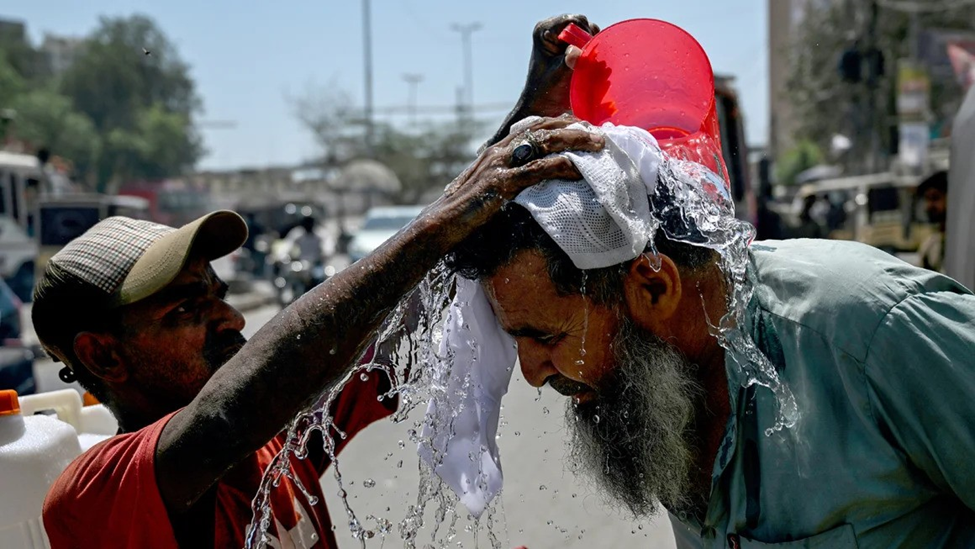South Asia’s Scorching Spring: Deadly Heatwaves Push India and Pakistan Toward Climate Catastrophe
- Rahaman Hadisur

- Apr 17
- 3 min read
Hadisur Rahman, Jadetimes Staff
H. Rahman is a Jadetimes news reporter covering Asia

As temperatures soar across South Asia, early arriving and long lasting heatwaves are putting hundreds of millions of people in India and Pakistan under extreme stress. The region, already vulnerable to the impacts of climate change, is now facing some of the hottest weather on record threatening human health, food security, and essential infrastructure.
An Unprecedented Onset of Heat
Typically hitting during May and June, this year’s heatwave season has arrived weeks early and is forecast to stretch even longer, exacerbating the already precarious conditions in both countries. According to Pakistan’s Meteorological Department, areas such as Balochistan may see temperatures soar up to 49°C (120°F) between April 14–18 nearly 8°C above seasonal norms.
“This feels like living in Death Valley,” one resident of Balochistan said, likening the searing conditions to one of the hottest places on Earth. Power outages lasting up to 16 hours a day in cities like Dera Murad Jamali have worsened the situation, leaving residents without fans or air conditioning as the mercury rises to unbearable levels.
India Faces Similar Extremes
Across the border, India is also facing the brunt of the heat. The India Meteorological Department has issued warnings for an “above normal number of heatwave days” in April. In Delhi, temperatures have already crossed 40°C (104°F) on multiple occasions 5°C above the average for this time of year.
In Rajasthan, a state already prone to extreme weather, maximum temperatures reached 44°C (111°F). Reports of illness are increasing as laborers and farmers endure unbearable working conditions without adequate shelter or hydration. Anita Soni of the Thar Mahila Sansthan expressed deep concern about the impact on women and children, saying, “There’s an instant lack of drinking water, people feel dizzy, vomit, and often fall sick.”
The Human Cost: Health, Pregnancy, and Mortality
Experts warn that these rising temperatures are testing human survival thresholds. Heat-related deaths in India and Pakistan have already claimed tens of thousands of lives in recent decades. Pregnant women and infants are particularly at risk. Karachi-based advisor Neha Mankani shared alarming statistics: “In the summers, 80% of babies are born preterm with respiratory issues… we see an increase in pregnancy induced hypertension, leading to preeclampsia the leading cause of maternal mortality.”
Agriculture and Livelihoods at Risk
For the region’s massive agricultural workforce, early heatwaves are nothing short of catastrophic. Crops mature too quickly, leading to lower yields. Water shortages intensify as plants demand more moisture to survive the dry heat. “If your crops are still young, the chances of survival in this heat are slim,” explained climate expert Mehrunissa Malik from Islamabad.
Farmers like Tofiq Pasha in Sindh are already experiencing the domino effect: early blooming, flower and fruit drop, and pest invasions all leading to massive losses in food production. The changing climate patterns have also altered rainfall cycles, leaving regions like Sindh and Balochistan facing drought conditions even before summer peaks.
Energy Strains and Infrastructure Collapse
The surging demand for electricity to power cooling systems is stretching national grids to the limit. Both countries have seen blackouts, school closures, and train cancellations to manage energy consumption. Coal shortages and failing infrastructure risk becoming regular occurrences if long-term climate resilience is not prioritized.
The Bigger Picture: A Climate Emergency
India and Pakistan are among the countries expected to suffer most from the escalating climate crisis. With over a billion people living in the subcontinent, the humanitarian and economic implications of these persistent heatwaves are enormous. “The cascading effects include food insecurity, water scarcity, and mass health crises,” Malik warned.
A Call for Urgent Climate Action
This year’s early heatwaves are not just seasonal anomalies they are warning signals. Governments must prioritize sustainable infrastructure, early warning systems, resilient agriculture, and energy diversification. Without immediate climate adaptation and mitigation strategies, large parts of South Asia could soon become uninhabitable during peak summers.
As the planet warms, South Asia’s heatwaves are becoming hotter, earlier, and deadlier and they are here to stay unless the world acts collectively and decisively.











































Comments